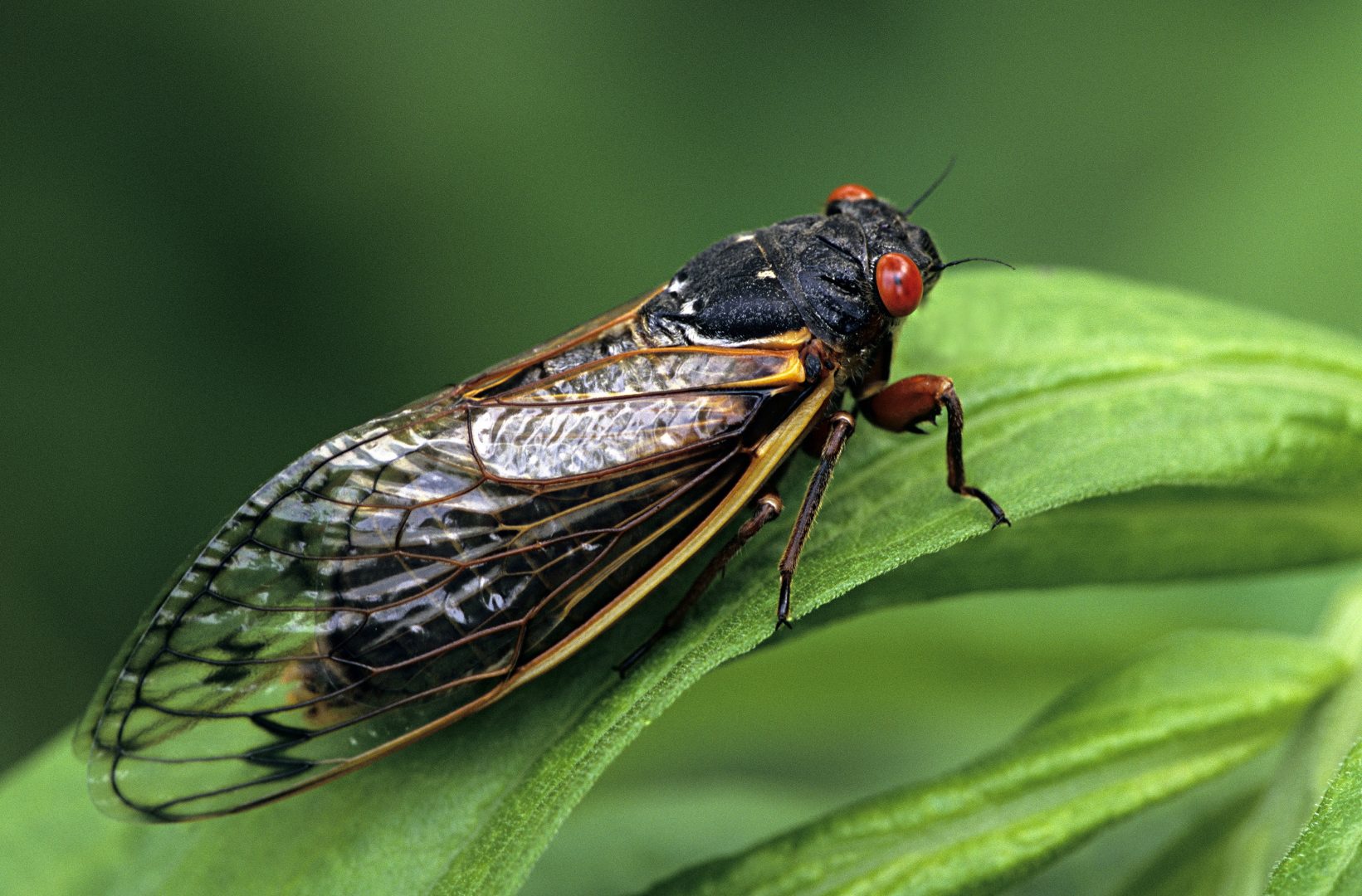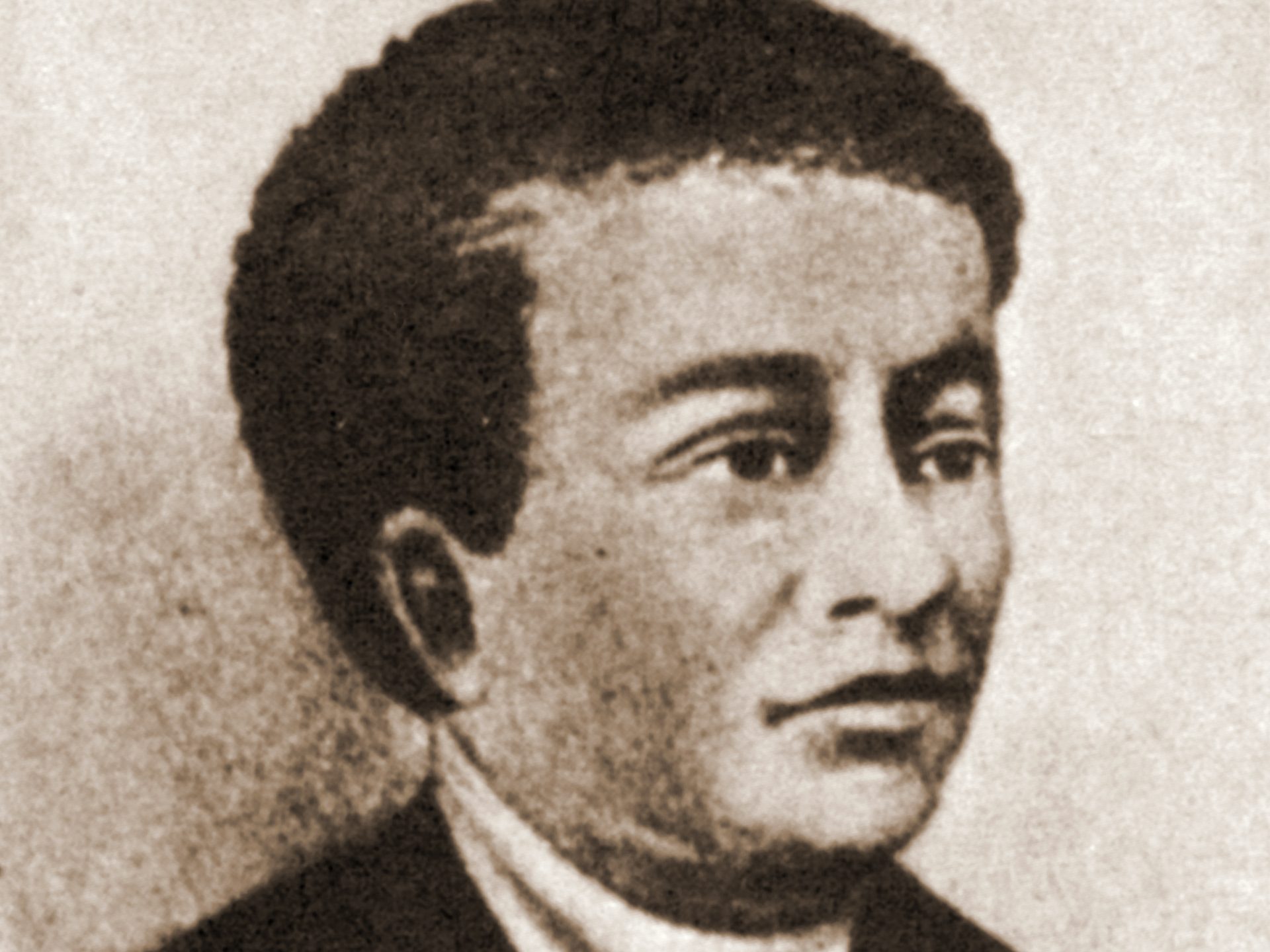
Periodical Cicadas spend 17 years underground feeding on tree sap. Now, billions of cicada nymphs are once again preparing to emerge from the earth and take to the treetops of 15 states across the East Coast and Midwest.
Ed Reschke / Getty Images

Periodical Cicadas spend 17 years underground feeding on tree sap. Now, billions of cicada nymphs are once again preparing to emerge from the earth and take to the treetops of 15 states across the East Coast and Midwest.
Ed Reschke / Getty Images

Ed Reschke / Getty Images
Periodical Cicadas spend 17 years underground feeding on tree sap. Now, billions of cicada nymphs are once again preparing to emerge from the earth and take to the treetops of 15 states across the East Coast and Midwest.
(Washington) — Benjamin Banneker – a free Black man born in 1731 – is best known for a land survey that established the original borders of Washington, D.C. But the naturalist also broke ground in another field: cicada research.
Banneker first observed the cicadas at his Maryland home as a teenager in 1740s. He spent the next 50 years documenting their unique life cycles — the bugs come out of the ground for only a few weeks every 17 years. His observations were among the earliest known to be documented.
Janet Barber and her husband, Asamoah Nkwanta, researched his handwritten notes from 1800 on the insects. Barber is an independent researcher and Nkwanta is with Morgan State University in Baltimore.
“He had not really had a formal education in the sciences,” Barber told NPR. “Yet he was just very brilliant to understand that something very different and phenomenal is going on.”
But his work documenting the cicadas has been largely overlooked because of his race, say Barber and Nkwanta.
“There’s a lot of stories about the cicada, but very seldom do you hear any mention of Benjamin Banneker connected to the discovery of the 17 year periodic cycle,” Nkwanta said.
Banneker’s notes are housed at the Maryland Center for History and Culture, and the Baltimore Sun recently featured Barber and Nkwanta’s 2014 paper about them.

Getty Images
Illustrated portrait of American author, astronomer, and farmer Benjamin Banneker (1731 – 1806), mid to late 18th century.(Photo by Stock Montage/Getty Images)
Soon billions of cicadas will emerge from the ground in more than a dozen states, including Maryland, where Banneker’s farm would be engulfed every 17 years. When he first witnessed them as a teenager, he was worried.
“I then imagined they came to eat and destroy the fruit of the Earth, and would occation (sic) a famine in the land,” Banneker writes. “I therefore began to kill and destroy them, but soon saw that my labor was in vain…”
Once he realized the cicadas were relatively harmless, “that’s where his fascination came and he began to study,” Barber said.
Besides noticing their 17 year life cycles, Banneker also observed cicadas’ behavior. The bugs are only above ground for a few weeks, which they spend mating and screaming.
As Banneker put it, “if their lives are short, they are merry,” noting that “they still continue on Singing till they die.”

A collection of interviews, photos, and music videos, featuring local musicians who have stopped by the WITF performance studio to share a little discussion and sound. Produced by WITF’s Joe Ulrich.
The days of journalism’s one-way street of simply producing stories for the public have long been over. Now, it’s time to find better ways to interact with you and ensure we meet your high standards of what a credible media organization should be.